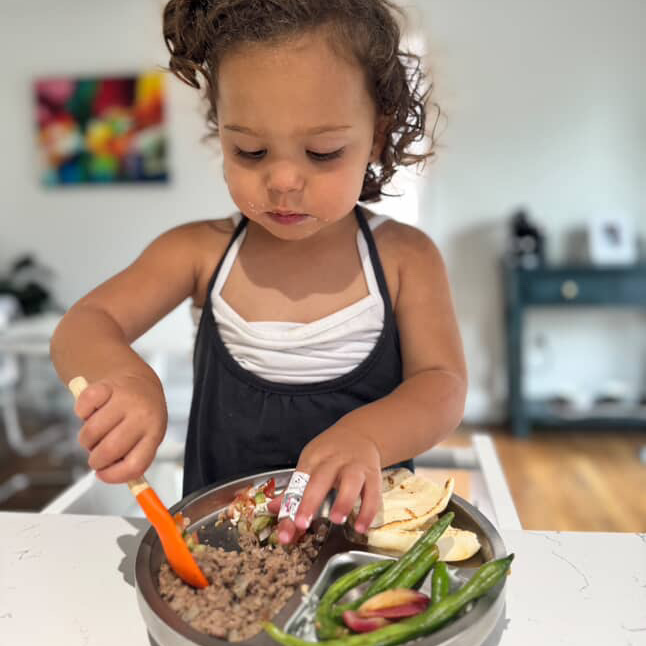Feeding Essentials

5 Mistakes Parents Make When Introducing Solids and How to Avoid Them
July 14, 2025 3 min read
Introducing solids foods is an exciting milestone in your baby's life—but it can also feel overwhelming. From knowing when to start to choosing the right feeding tools, parents often run into avoidable bumps along the way. To make the transition smoother and safer, we’re breaking down the 5 most common mistakes and how to avoid them. Feeding should be a joyful journey, not a source of stress.
1. Feeding Solids Too Early or Too Late
Timing is key. Introducing solids too early (before 4 months) can increase the risk of choking and digestive issues. Waiting too long (after 7 months) might cause feeding delays or increased pickiness. According to the American Academy of Pediatrics, signs that your baby is ready include good head control, sitting with support, and interest in food.
2. Skipping a Safe Feeding Setup
Having the right tools can make all the difference in creating a positive mealtime experience. A secure, suction-based plate like our Avanchy Stainless Steel Suction Baby Plate helps prevent spills, giving your little one the freedom to explore textures without tipping their plate.
Pair it with soft-tipped baby utensils to encourage self-feeding while ensuring safety. Ergonomic handles are easier for tiny hands to grip, promoting independence and coordination.
3. Offering Too Much Variety Too Soon
It’s tempting to offer a rainbow of flavors right away, but too much variety in solids can overwhelm your baby. Introduce one new solid food every 3 to 5 days. This makes it easier to spot allergies and helps your child gradually get used to different textures and tastes. Keep initial servings small—about 1 to 2 teaspoons—and build from there.
4. Forgetting to Model Mealtime Behavior
Babies learn by watching. If you're eating at a different time or rushing through meals, they might struggle to connect with the feeding experience. Sit down and eat with your baby whenever possible. Demonstrate how to scoop food, sip from a cup, and chew. This builds positive associations and reinforces mealtime as a shared, enjoyable experience.
Try introducing a durable toddler cup with a straw or spout to help them transition from bottles. Watching you drink from your own cup gives them a model to follow.
5. Letting Messes Ruin the Moment
Solids are messy. Expect it, embrace it. The goal isn’t cleanliness—it’s exploration. Many parents get frustrated by food on the floor or smears on the high chair tray, but mess is part of learning. Place a silicone mat under the highchair and use an easy-clean bib to protect clothing.
Encouraging your baby to touch, squish, and even fling food now lays the foundation for better self-feeding skills later. Patience is key!
Supporting a Positive Feeding Journey
Introducing solids doesn’t have to be stressful. When you have the right tools, a calm mindset, and a sense of humor, feeding becomes a joyful part of your daily rhythm. The Avanchy stainless steel suction baby plate is designed with both parents and babies in mind, combining safety, style, and function in one eco-friendly package.
Looking for more support? Check out resources like the CDC's Infant Nutrition Guidelines for trusted insights.
Bonus Tips to Make Feeding Easier
One underrated tip: consistency. Feeding solids at the same times daily helps establish routine and builds trust. Your baby will know what to expect and feel more at ease trying new foods.
Don't forget to create a soothing environment. Turn off screens, reduce noise, and give your baby your full attention. Feeding time should be calm and focused—distractions can lead to disinterest or fussiness.
Consider documenting what your baby eats in a simple food journal. This helps you track reactions and preferences, and can be helpful if you’re working with a pediatrician or dietitian.
Lastly, be flexible. Some days will be messier, and some foods will get rejected. That’s okay. Feeding is a learning curve for both parent and child—celebrate the small wins!

Subscribe
Sign up to get the latest on sales, new releases and more …










